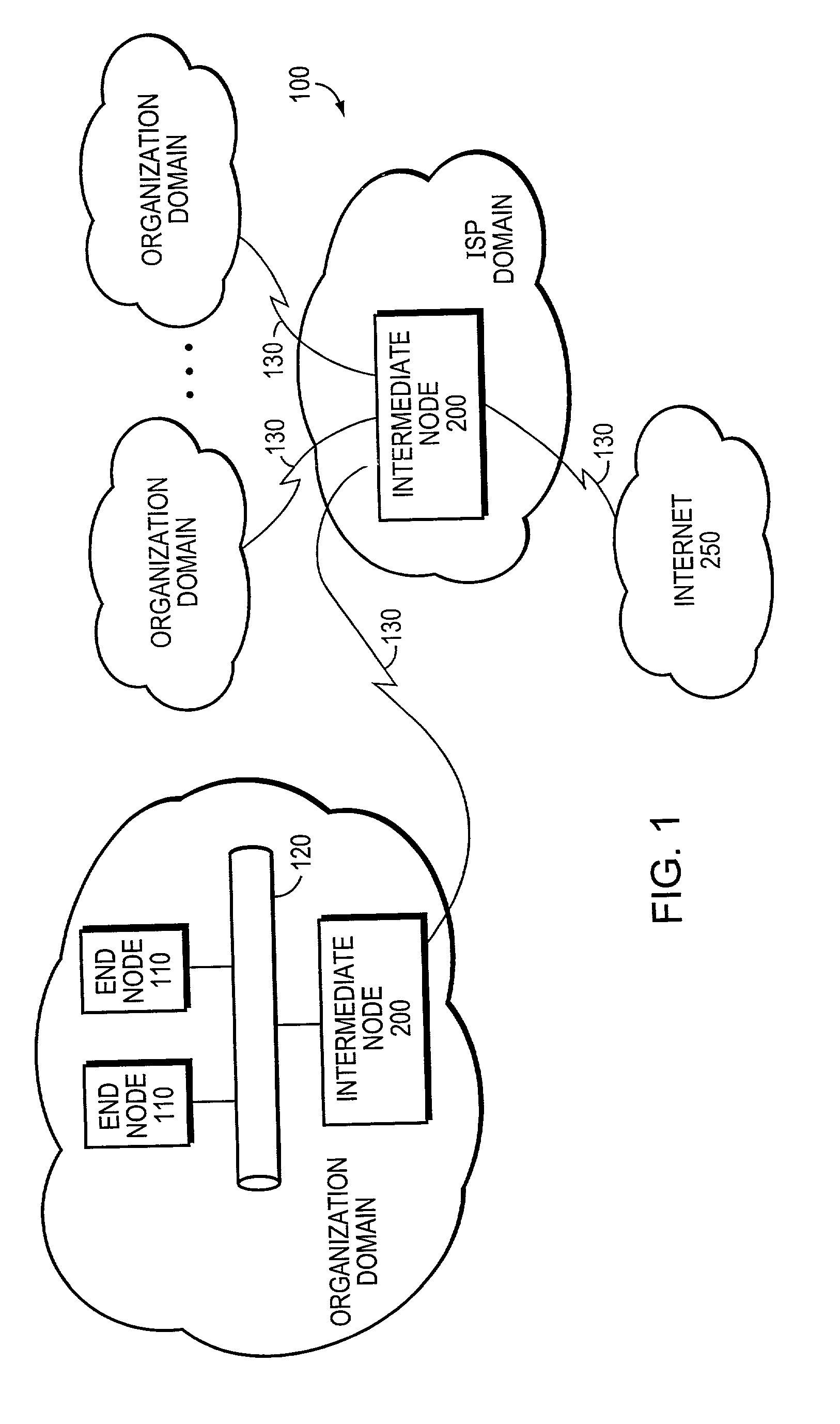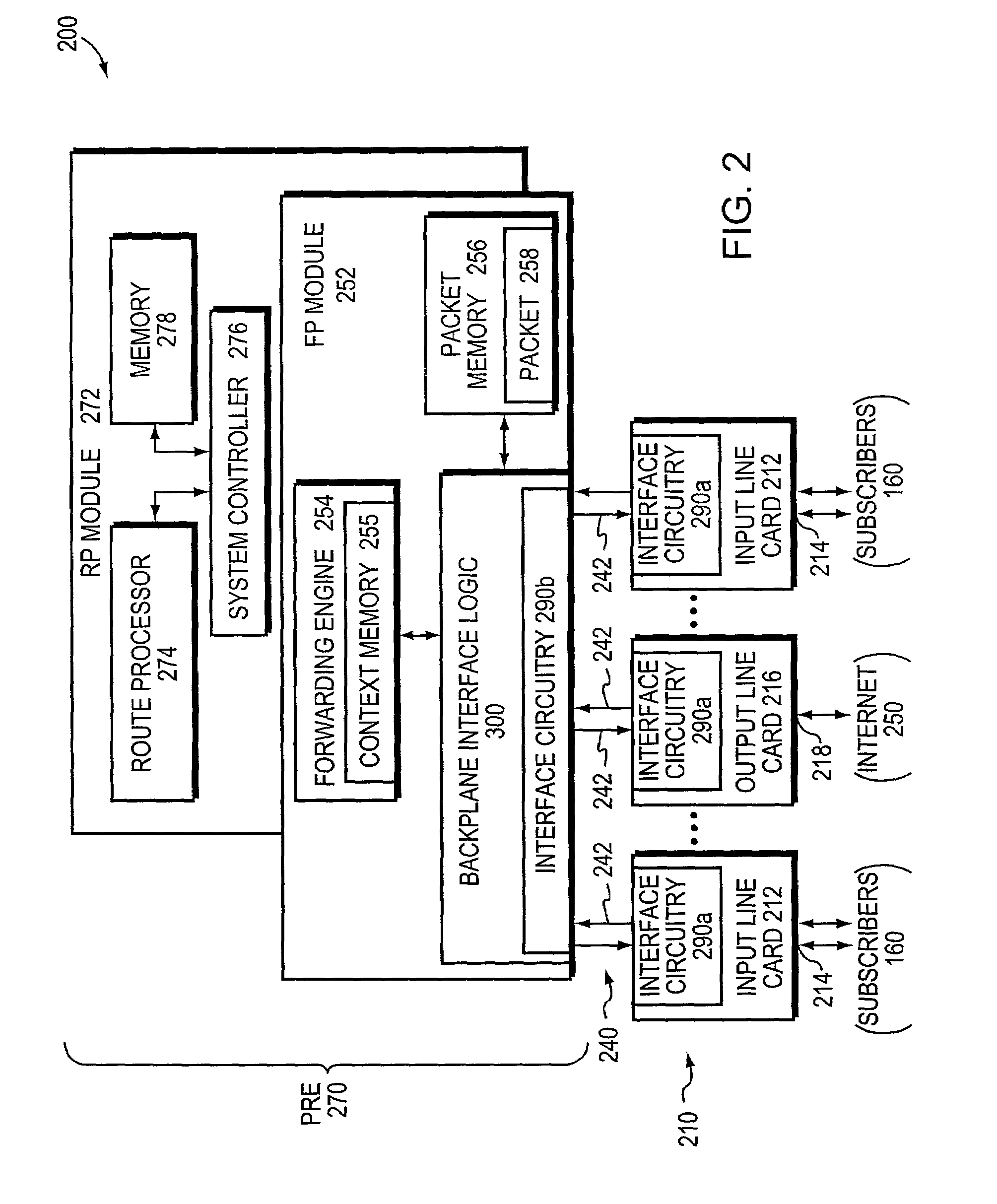Scheduling assist for data networking packet dequeuing in a parallel 1-D systolic array system
a data networking and parallel technology, applied in the field of systolic arrays, can solve the problems of affecting packet throughput, further complicated tasks, and each processor has a limited amount of time to process packets, and achieve the effect of quick location of output channels
- Summary
- Abstract
- Description
- Claims
- Application Information
AI Technical Summary
Benefits of technology
Problems solved by technology
Method used
Image
Examples
Embodiment Construction
[0046]FIG. 1 is a schematic block diagram of a computer network 100 comprising a collection of communication links and segments connected to a plurality of nodes, such as end nodes 110 and intermediate nodes 200. The network links and segments may comprise local area networks (LANs) 120 and wide area network (WAN) links 130 interconnected by intermediate nodes 200, such as network switches or routers, to form an internetwork of computer nodes. These internetworked nodes communicate by exchanging data packets according to a predefined set of protocols, such as the Transmission Control Protocol / Internet Protocol (TCP / IP).
[0047]FIG. 2 is a schematic block diagram of an intermediate node 200, such as an aggregation or edge router that may advantageously implement the present invention. The router 200 comprises a plurality of line cards 210 coupled to at least one performance routing engine (PRE) 270 via a unidirectional (i.e., point-to-point) interconnect system 240. The line cards 210 ...
PUM
 Login to View More
Login to View More Abstract
Description
Claims
Application Information
 Login to View More
Login to View More - R&D
- Intellectual Property
- Life Sciences
- Materials
- Tech Scout
- Unparalleled Data Quality
- Higher Quality Content
- 60% Fewer Hallucinations
Browse by: Latest US Patents, China's latest patents, Technical Efficacy Thesaurus, Application Domain, Technology Topic, Popular Technical Reports.
© 2025 PatSnap. All rights reserved.Legal|Privacy policy|Modern Slavery Act Transparency Statement|Sitemap|About US| Contact US: help@patsnap.com



